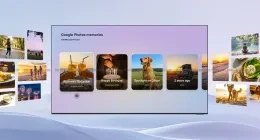The day one for Microsoft’s Build 2017 developer conference has come to an end. It was filled with announcements about developer-focused initiatives, cloud, and other info on the productivity stack. It also hosted a session focused on how developers can port their existing desktop apps to the Windows Store to make it more widely available to Windows 10 users.
This session was called ‘Bring your desktop apps to UWP and the Windows Store using the Desktop Bridge.’ During the said session, the Redmond giant confirmed that around 1,000 desktop (Wind32) apps have already been converted and snuck their way into the Windows Store till date.
Further, Microsoft is of the opinion that more than two-thirds Win32 apps can be ported to the Windows Store — without having to re-code the entire app from scratch. But, one needs to remember that the app shouldn’t require elevated permissions to work in the Windows environment. Then, you can employ the Desktop Bridge tool to convert a desktop Windows installer like .msi or .exe to an AppX package that can directly be deployed to the Windows 10 Store.
The growth of this ‘Desktop Bridge’ app converter tool is extremely necessary for the adoption of Microsoft’s latest experiment to take on Google’s Chrome OS — Windows 10 S. Earlier last week, Redmond took the wraps off this simplified, yet powerful Windows 10 iteration that’s aimed squarely towards students. It was announced at an education-themed event alongside the debut of the Surface laptop.
But, to make the operating system lightweight and easy-to-use, Microsoft decided to strip Windows 10 S away from the capabilities of running Win32 desktop apps. It can only run apps available on the Windows Store, thus the Redmond giant is urging developers to port their Win32 software’s over to the same. And Desktop Bridge, coupled with a few minor tweaks, can certainly come in handy for the process.
Once you’ve faith and are through with the process of packaging your Win32 app as an APPX file, you can now deploy the same on the Windows Store. And Microsoft believes that you’d be satisfied with the response and would soon want to migrate your app to UWP to then distribute it to every Windows Core-powered platform.
The Tech Portal is published by Blue Box Media Private Limited. Our investors have no influence over our reporting. Read our full Ownership and Funding Disclosure →






